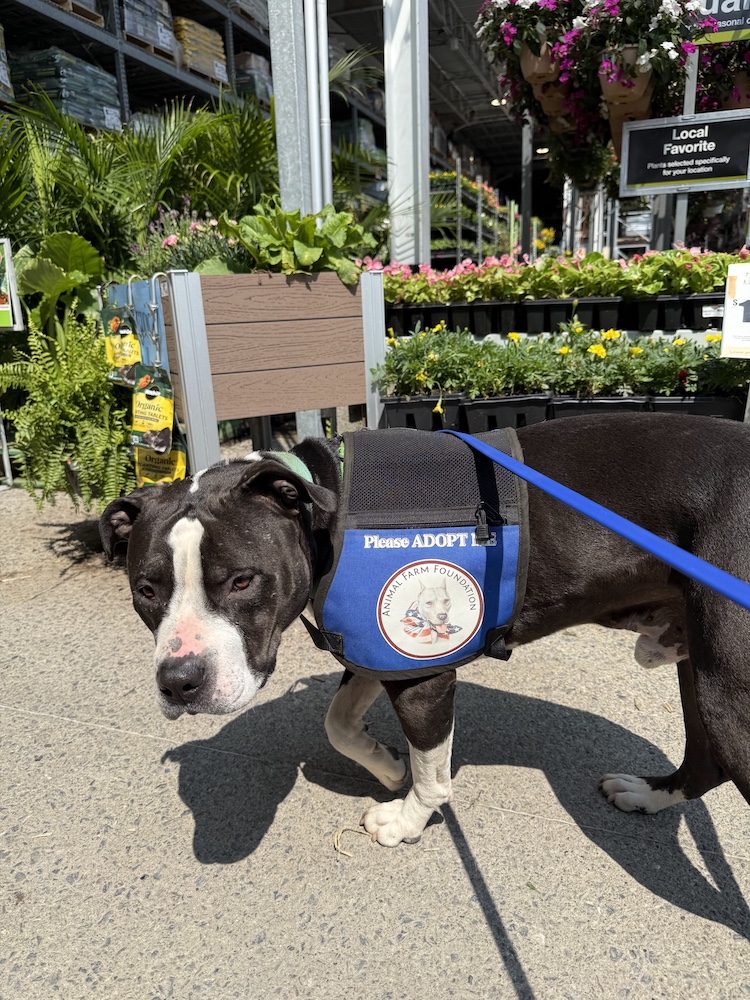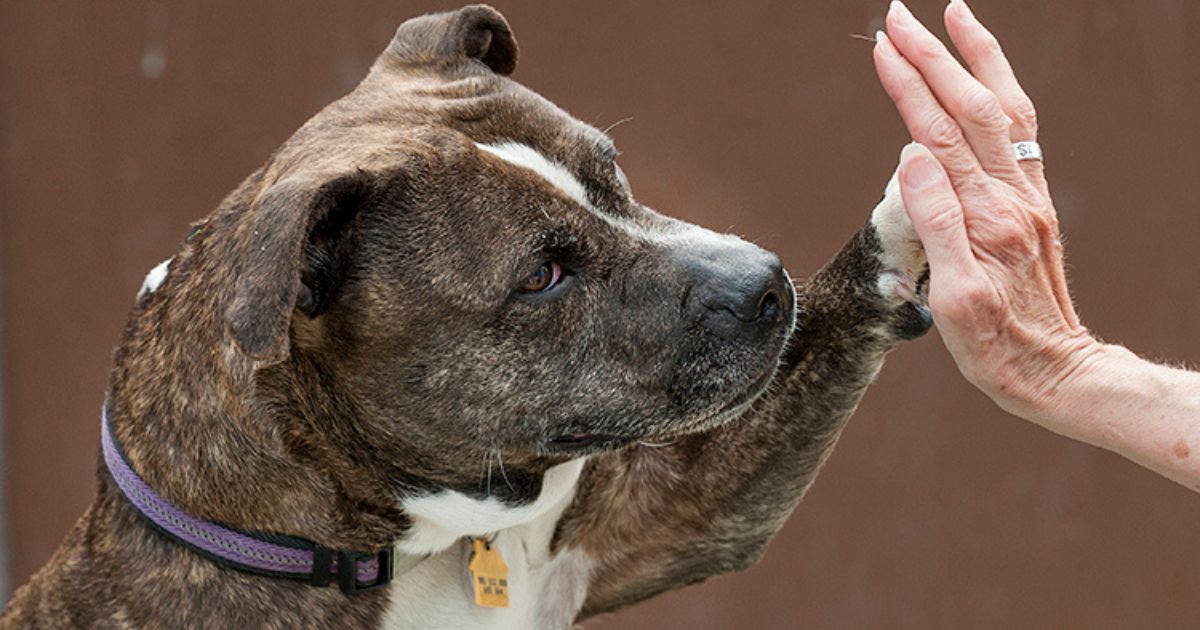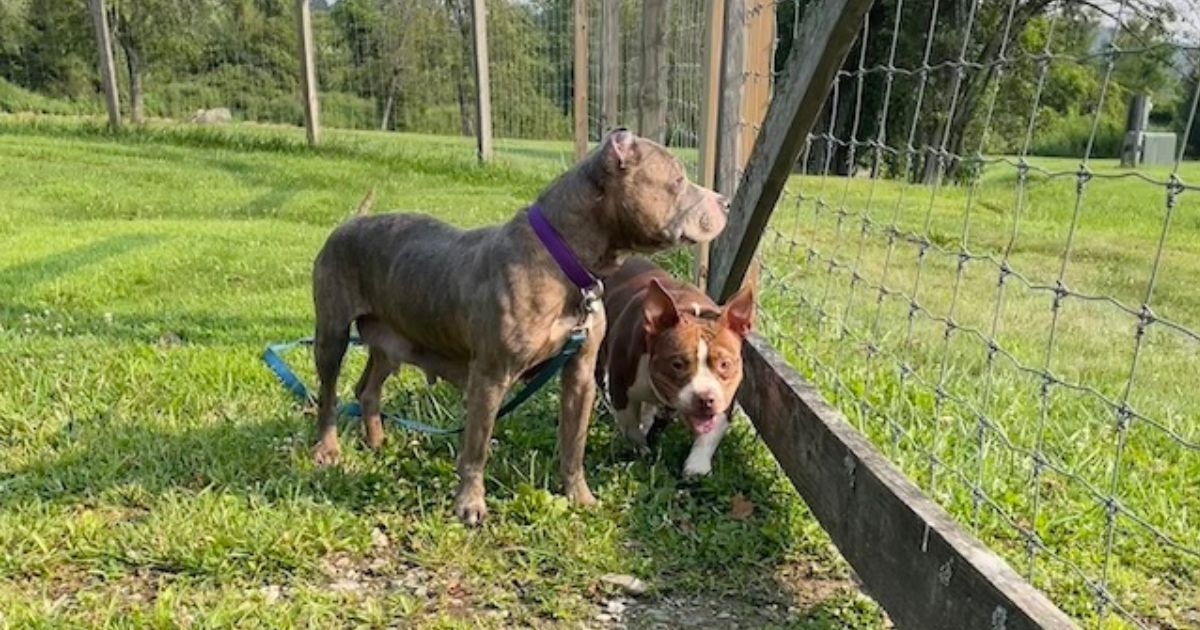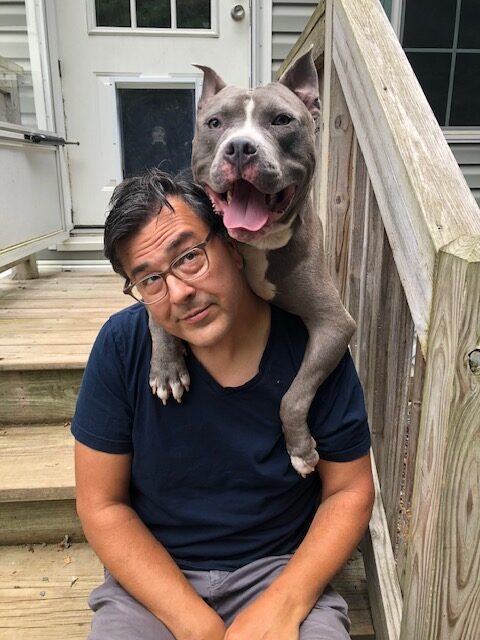
Each dog living in a shelter that has been cleared for adoption deserves to be marketed in a way that celebrates their individuality, not just their challenges. Dogs exhibiting complex or multiple behaviors in the shelter environment often face longer waits for adoption. And not every organization is equipped to place or market these dogs. Today, we’re proposing an approach that focuses on positive, individual-centric marketing that respects both the dog’s needs and the capabilities of potential adopters, as well as the resources of your organization.
The Important Questions
Marketing never exists in a vacuum, and is always deeply connected to an organization’s policies, procedures, and resources. Placing dogs with more complex behaviors requires some forethought, and will ultimately depend on many factors, chief among them the organization’s ability to provide adoption counseling and ongoing support or resources. We know that not every organization is working with the same resources and policies, so before marketing comes into the picture, it’s critical to ask these questions:
- Can you provide thorough, conversation-based adoption counseling (if not for all animals, then particularly for those in need of behavior support)?
- Does your organization have a clear process for adopters to ask questions and get timely answers about animals they are interested in?
- Do you provide ongoing support or training services (in-house or referrals) for dogs with multiple or complex behaviors?
- Are assessments of behavior in the shelter done on an individual basis, and without broad assumptions and stereotypes?
If you can answer yes to these questions, then it’s time to work on communicating what you know about each individual dog through their bio, social media marketing, and other marketing opportunities available to you (press, flyers, community partners, etc.)! If not, you may need to work on shoring up your internal policies and procedures before it’s time for marketing.
Shifting Language: Focus on clarity, connection, and understanding
Traditional adoption marketing can sometimes default to highlighting “problems” or unintentionally uses intense, unfamiliar, or frightening terminology (e.g., “aggressive,” “fearful,” “reactive”). This can inadvertently alienate potential adopters who might not understand the nuances of dog behavior. Furthermore, such language can deter potential adopters entirely, creating an unnecessary barrier and negatively impacting their perception of all animal welfare organizations.

In all marketing, but particularly in adoption marketing or bio writing, it’s critical to remember your audience and how much your words matter. As someone who spends their life with animals, you likely have a good handle on the jargon and everyday language of dog behavior. For most of your audience, this isn’t the case. Your word choices and phrasing will need to be easily understood by adopters to avoid confusion and setting both dog and family up for failure.
A common and understandable concern raised by some professionals in the behavior & training community is that simplifying language about a dog’s complex needs might inadvertently lead to unprepared placements, risking both the adopter’s success and community safety. This concern stems from a genuine desire for optimal outcomes, and it’s critical to note that our approach isn’t about diluting honesty; it’s about employing accessible language in initial marketing to widen the pool of potential adopters, who can then be thoroughly educated and supported through the adoption counseling process (which is where our initial important questions come into play).
To reiterate, this isn’t about hiding information; it’s about strategic, phased transparency that empowers adopters by:
- Using descriptive, objective language that avoids judgment and emphasizes the dog’s unique needs or preferences
- Framing these needs in plain language that is easily understood by the public, focusing on lifestyle compatibility rather than clinical terms.
Examples of Transparent, Adopter-Friendly Language:
Remember, these suggestions are for marketing efforts. We encourage a deeper dive into each of these behaviors and ideas during the adoption counseling process.
When describing a dog’s specific needs, choose language that highlights their individuality and potential, rather than focusing simply on limitations. This helps potential adopters envision a positive future and imagine their life together.
- Instead of “dog-reactive”: “Prefers to be the only dog in the home,” or “Thrives as a solo companion and enjoys focused attention from their people. He’s just not a social butterfly with other canines, and that’s okay!”
- Instead of “stranger danger”: “Takes time to build trust and bonds deeply once comfortable, excelling in a quiet home with a consistent routine and predictable visitors. She’s a bit shy at first, but her loyalty is unwavering once you’re in her circle.”
- Instead of “resource guarder”: “Loves his special things (like toys or food bowls!) and appreciates respectful boundaries around them. He thrives with an adopter who understands positive reinforcement management strategies – just like managing a toddler’s favorite toy!”
- Instead of “separation anxiety”: “Seeks a home where someone is often present or can offer dedicated training for alone time. He’s a true companion who enjoys company and isn’t a fan of being left out of the fun!”
- Instead of “no cats”: “Seeks a feline-free home to feel most secure and relaxed. He’s just not a cat person – every dog has their preferences!”
- Instead of “mouthy with hands”: “Explores the world with his mouth and thrives when given guidance on appropriate chewing outlets. A home with plenty of engaging toys would be ideal! Think of him as a curious puppy who still has a lot to learn about polite interactions.”
- Instead of “jumpy-mouthy”: “So eager to greet new friends, he’s learning ‘four-on-the-floor’ manners! He’d benefit from an adopter who can continue his positive training to help him manage his overexcitement.”
- Instead of blanket and vague terms like “Needs experienced handler”: “Perfect for someone who enjoys working with smart, learning-focused dogs – a rewarding partnership for those who are interested in continuing training or have lived with a dog who _____________ (fill in with a simple explanation of behavior).”
Storytelling: Highlighting Strengths and Individuality
Every dog, regardless of their history, possesses unique positive traits. What makes this dog special? Focus on their endearing personality traits, favorite activities, successes in training, or progress made while in your care.
Emphasize that a “behavior barrier” doesn’t define their entire being; it’s simply one facet of a complex, lovable individual. Highlight moments of joy, connection, and progress. Use everyday language that connects with adopters on an emotional level.
Whatever strategy you choose, be sure to provide clear next steps for interested adopters to connect (make it easy for someone to learn more!).
Effective Storytelling Techniques
Marketing Our Own Pets: Think about how you’d describe your own dog’s personality or unique needs to a friend – with affection, understanding, and an emphasis on what makes them special. You wouldn’t lead with “my dog has resource guarding tendencies,” but rather “He’s super protective of his favorite squeaky toy and has some very strong opinions about sharing!” Apply that same authentic, positive framing to dogs living in shelters.
The “Growth Journey” Narrative: Focus on progress and learning in the shelter environment, showing how a dog has overcome challenges or learned new coping mechanisms for their quirks. This builds hope and demonstrates resilience.
The “Perfect Match” Angle: Describe what type of person or lifestyle would truly make this dog shine, specifically highlighting how their unique personality or needs would fit seamlessly into a compatible home. This includes matching them to families who may be well-versed in certain behaviors due to prior experience or a desire to work with a dog on specific skills.
It’s helpful to remember that while some behaviors are incompatible for some adopters and lifestyles, for other community members, they may be behaviors they are used to and are well-versed in managing. We can forget that many people live with dogs who aren’t “perfect” and may have gained valuable experience on living with dogs exhibiting different behaviors over their life as a dog owner.
The “Hidden Gem” Approach: These are dogs who might not immediately grab attention but reveal their best selves over time and with consistent positive experiences. Their unique charm truly blossoms in a relaxed environment.
The “Specialist Needed” Frame: Presenting dogs who need experienced handlers not as burdens, but as rewarding partnerships for dedicated individuals who enjoy working with a dog’s specific learning style or needs. This attracts knowledgeable adopters who are ready for a committed relationship.
Visual Marketing for Impact
Photography That Tells a Story:
- Capture moments of calm, joy, and connection. Include positive human interaction in photos to show their capacity for bonding.
- Show the dog in various positive contexts (e.g., engaging with enrichment, going for a walk, relaxing in a quiet space).
- Crucially, avoid photos that could be misinterpreted or emphasize anxiety or stress, just as you wouldn’t take a photo of your own dog at their most anxious moment for an adoption profile.



Video Content Strategies:
- Short clips showing training successes or positive behavior shifts are powerful.
- Showcase moments of play and relaxation, highlighting their true personality and charming quirks.
- Staff and volunteer testimonials about the dog’s endearing qualities provide authentic insight.
- “Day in the life” content can normalize their unique routine, showing happy moments even with their specific needs.
Video Credits: Monmouth County SPCA (Skip to the Good Part); Seattle Humane (Kirby’s Adoption Profile); Humane Society of the Nature Coast (Sweet Potato Strut)
Strategies for Social Media & Digital Marketing
Keep in mind that the dogs who have multiple behaviors to market often need more intensive marketing strategies — a one-time post often won’t do it, so consider how you can create and maintain interest across multiple platforms and posts.
We all hope to be able to craft engaging posts that focus on personality and positive traits, while including each dog’s unique needs. Below are a few ideas for increasing engagement and tapping into the strategies that may help connect with the right adopter or family:
- Use hashtags that emphasize individuality and positive traits (e.g., #OneOfAKindDog, #LovesHerPeople, #PuzzleToyPro, #QuirkyAndCute).
- Share training milestones and breakthrough moments to showcase progress and resilience. Encourage community engagement through positive comments and ask for folks to share with a friend who might be this particular dog’s perfect match (especially if you’re seeking an owner experienced with managing a certain behavior)
- Market a dog by asking the question “Who has lived with / Who grew up with a dog who…” and target an audience of people who may already have experience with certain behaviors. Remember that we’re using plain, understandable language in these descriptions.
- Get 5-10 second video clips of staff and volunteers saying the 1 thing they love most about a dog
- If you have behavior staff, take a quick, public-friendly video of a dog showing off their best “I’m working on myself” moment. Focus on something easily understood, successful, and showing growth/potential.
- Has a staff member, volunteer, or foster taken a dog on a sleepover or outing? Have them share the difference between the dog in the home vs. how they might present in the shelter and post a quote or video testimonial.
- Address misconceptions through education, not defensiveness, by sharing that all dogs have unique needs and behaviors. Use success stories of dogs who have had successful matches to change narratives around perceived “difficult” dogs.
- Build relationships with local media and influencers who can champion these animals and increase opportunities for exposure (and education!).
- Sometimes you can use humor (judge carefully the moments for this) to help explain a specific behavior (see: Danny, below!)
Marketing When Information is Limited
A common reality in many large shelters is a high volume of stray intake and limited knowledge of a dog’s history. In such cases, observations of “challenging behaviors” might be all that’s initially known, particularly given the stress of the kennel environment. How do you market a dog when all you know are behaviors that might deter the average adopter?
This is precisely where the power of observational language becomes even more crucial.
Focus on Observable Behavior, Not Labels: Instead of labeling a dog with a blanket term, describe what you see and immediately follow it with solutions:
- Instead of “fearful”: “This dog tends to seek space from new people and may try to avoid interaction,” or “Shows discomfort when approached quickly and prefers gentle, slow introductions.” Follow this with a quote from someone who has earned this dog’s trust and knows their deeper personality or at least what they have positively responded to.
- Instead of “severe reactivity”: “When on leash at the shelter, this dog becomes very excited and vocal around other dogs/people, and would thrive in a home with calm walks and a focus on helping them learn to relax and respond calmly when they see exciting or surprising things. Our adoption team can provide some resources for setting him up for success.”
- Instead of “dog aggressive”: “Based on what we’ve seen, this dog prefers to be your one and only canine companion and would thrive in a home where they don’t have to share their space with other dogs. Our team can discuss strategies for managing dog-dog interactions outside the home.”
Even with limited history, your marketing can be honest about current observations while remaining hopeful about a dog’s potential for change and successful integration into the right home. When coupled with other tactics like testimonials or quotes from staff/volunteers who love these pets most or have made a deeper connection with them, you can help an adopter really “see” themselves with these dogs.
Recognizing the Impact of Shelter Environment
It’s vital to acknowledge how the stress of living in a shelter can create or amplify behaviors. Often, what appears to be a “barrier” in the shelter environment may not always be expressed in the home in the same way. And vice versa — we know that for some dogs, their behaviors are suppressed in the shelter environment but may emerge at home. Through the work that we all do, we can try our best to understand a dog’s true self. However, it’s important to retain this perspective and try to help adopters also understand that everything is context-dependent.
Where possible, frame observed behaviors as seen “in the shelter” or “in the kennel environment”.
Read more on this topic from the National Canine Research Council
Recap: Every Dog's Story Matters
Every dog is an individual worthy of thoughtful, positive representation, embracing their unique personality and all its quirks. Positive, responsible, and inclusive marketing approaches create more opportunities for successful placements that benefit dogs, adopters, and communities alike.

- Ensure your existing adoption policies and procedures support the placement of dogs exhibiting multiple or complex behaviors.
- Review your current marketing materials through the lens of positive framing and individuality.
- Start small, experiment with language, and build on successes, just as we learn to live with and love our own dogs’ unique habits.
- Foster stronger collaboration between marketing, adoptions, and behavior teams.
- Continue to champion each dog as the unique, deserving individual they are.
Resources & Tools
Explore additional resources and tools from Animal Farm Foundation to support your positive marketing efforts, including:









